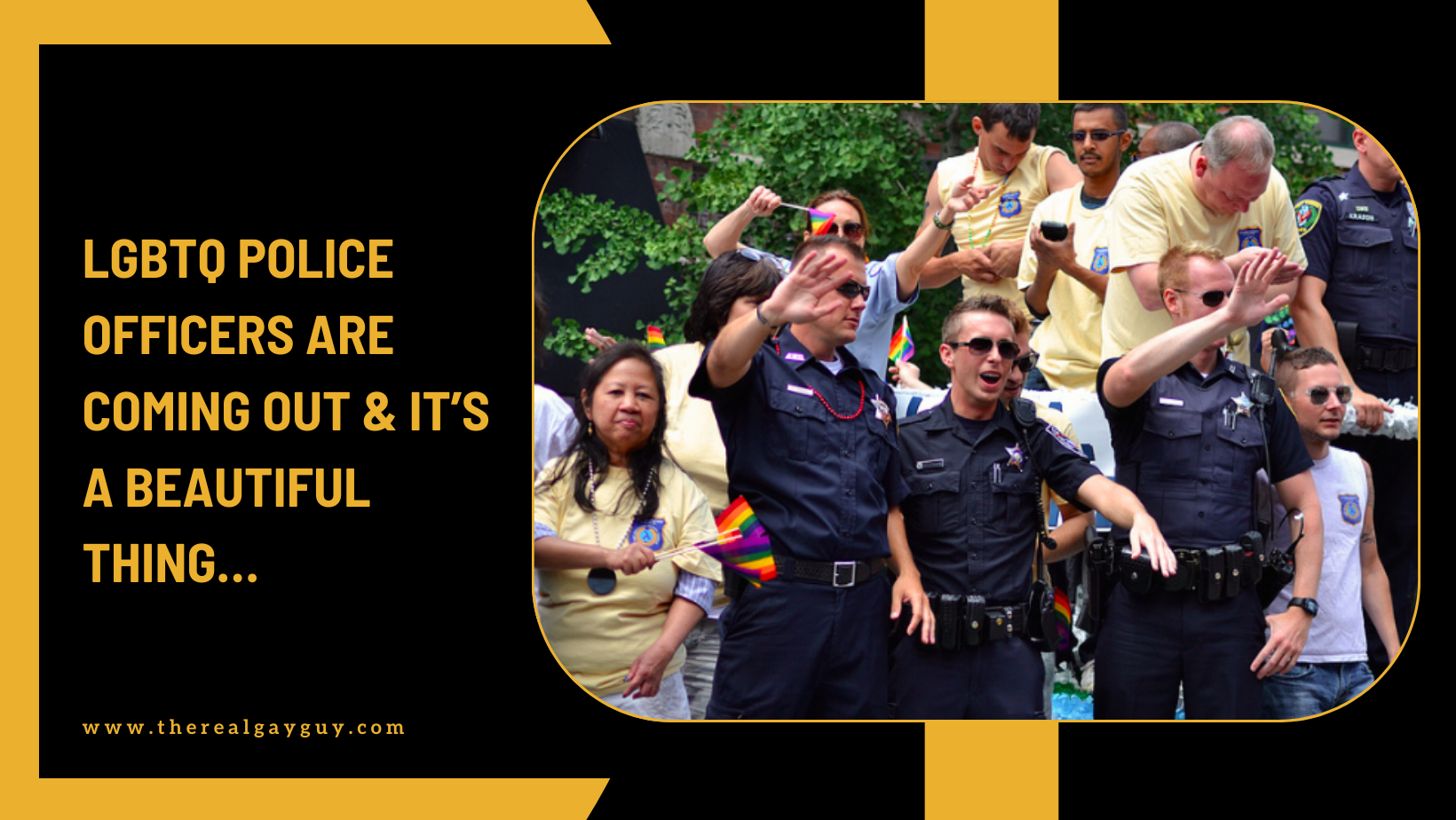While LGBT folks across the country have had fluctuated emotions in the last 3 years regarding progressive (and regressive) laws, one particular community seems to have been left in silence. But that’s all changing.
According to research, 15 – 43% of gay and transgender workers have experienced some form of discrimination on the job, 8 – 10% claim to have been passed over or fired, and up to 41% have been verbally or physically abused or had their workplace vandalized.
As police officers, LGBTQ people face a stronger need to stay hidden. In a job that requires courage, heart and strength, gay people still fight against social stigma that’s all too transparent in the police force.
Over twenty years ago, police officers were constantly hassled because of their sexual orientation. Accounts have been made of cops who asked for backup on a dangerous call and received none because they were believed to be gay, reports the Globe.
Springfield police officer Michael Carney said he remembered one officer at his graduation in 1982 in particular who brought a man to a party. That officer was later sucker-punched by a veteran officer: “I really firmly believed that if anyone found out [I was gay] they were going to kill me,” he recalled to the Globe.
Countless of stories are out there—some positive, others not so positive. But through it all, LGBTQ police officers have each other for support thanks to groups like GOAL (Gay Officers Action League), which just celebrated its 25th anniversary.
Every year, GOAL marches in the pride parade, decked in their police uniforms. Not very long ago, they weren’t allowed to march in such rallies.
Police officer Stacey Simmons wasn’t allowed to wear her uniform even while she visited other departments to train officers on how to interact with gay victims and colleagues. She later filed a lawsuit against one of her supervisors (who was also accused of making antigay slurs about other gay troopers). That lawsuit derailed her supervisor to become commissioner. Now, Simmons is a detective sergeant in Los Angeles.
Simmons was one of the original six officers to start GOAL, thanks to Officer Preston Horton’s news article asking for police officers like him to get in touch to start a support group. She was 24-years old at the time, and was so scared she had been followed that she kept peeking out the window.
“I was petrified,” she said to the Globe. “I thought they were going to find out I had gone to this meeting and confront me and fire me.”
The group now has more than 300 members and has trained dozens of police chiefs on how to treat gay officers in their departments and has led police academy trainings to help recruits understand how to work with gay victims.
Carney was also a part of the original six. When he left Springfield Police Department, he was struggling with his identity but wanted back on the force. He reapplied in 1991 and told the hiring committee he was gay. They rejected his bid for reinstatement. After filing a complaint with the Massachusetts Commission Against Discrimination, the agency ruled there was a probable cause for discrimination in 1994, and brought him back. He retired this past year.
As for Horton, the man who sought to create the support group, by 1991 he had told his chief he was gay and actually received incredible support: “They said, ‘why didn’t you tell us? We would have backed you up. You’re a good cop.’” he said.
One of Horton’s colleagues, officer Ken Watson, was less fortunate. After he and his wife separated, he took his boyfriend to a gay pride rally in Boston. A few days later, he discovered a pink triangle, a symbol used once by the Nazis to identify gay people in concentration camps, on his truck.
There are countless of stories like these, and organizations like GOAL aim to address the needs, issues and concerns of gay and lesbian law enforcement personal.
While our society progresses in LGBT acceptance, seldom do we realize the impact, until we hear the stories firsthand. Once hidden behind a uniform, gay police officers are slowly but surely coming out, but in order for them to feel comfortable in doing so, we need to build an awareness for community, for without community it is much harder to find strength.
Read more: 10 Fashion Tips That Won’t ever Become old
Read more: Right Man, Wrong Time
Read more: The Difference Between Momentary Love & True Love

